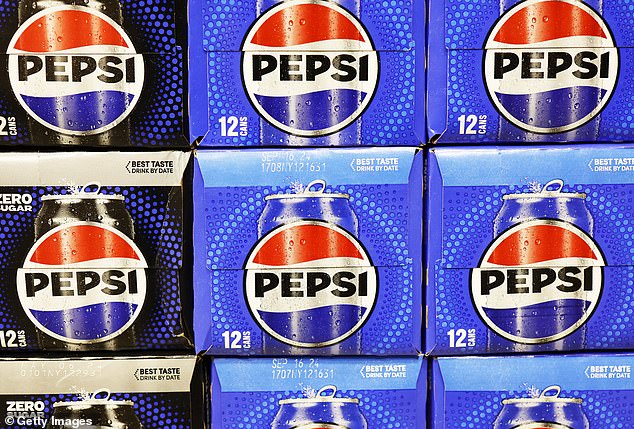Coca Cola admits steep price rises have hit sales – with Americans buying hundreds of millions fewer cans, bottles and fountain drinks last year
- Coca-Cola will increase the price of its drinks by about 10 percent in 2023
- Customers were still willing to pay the higher prices worldwide, but not in the US
- Bosses at the soft drink giant said price hikes in the US are coming to an end
Coca-Cola’s strategy to drive up prices has boosted profits, but in North America sales are losing momentum.
Globally, the volume of drinks sold grew by 2 percent in 2023, even though they were on average 10 percent more expensive.
The double whammy of more drinks sold at higher prices helped sales rise 6 percent to $45.8 billion, Coca-Cola said today as it announced its full-year results.
But in North America, its biggest market, bosses admitted a succession of price rises coincided with a 1 percent drop in sales volume by 2023.
Given that the company sells almost 2 billion drinks around the world every day, in real terms that would mean hundreds of millions fewer cans, bottles and soft drinks bought in shops, restaurants and bars.
Coca-Cola reported that overall sales rose despite price increases of about 10 percent last year. The photo shows an employee stocking shelves at a store in Orem, Utah

Although sales volume increased around the world, Coca-Cola CEO James Quincey acknowledged that consumers in North America were beginning to cut back on their spending
Fast food giants have also admitted that higher prices, such as the $29 KFC bucket and the $18 Big Mac meal, are impacting sales at McDonald’s, KFC and Pizza Hut.
Coca-Cola’s CEO James Quincey said the company in North America is starting to feel the impact of the high prices and will moderate them in response.
“In North America and Europe, while inflation is moderating, the cumulative impact of inflation is putting pressure on certain consumer segments looking for value,” Quincey said in an earnings call with investors.
Him later told Bloomberg that there would be an end to the successive quarterly price increases.
“Some of the American consumers came under pressure in 2023,” Quincey said. “We’re making sure we have affordable options that allow people to stay within the franchise.”
He added that by 2024, “normalized price levels will occur in most countries.”
Despite the decline in sales in North America, increased global demand for its beverages – including Sprite, Fanta, Powerade and Minute Maid – suggests the company is properly passing costs on to consumers.
Its rivals are not doing so well in that regard, as inflation has driven up costs but also caused consumers to scale back their purchases.

Pepsi reported a quarterly sales decline last week after consumers rejected higher prices. Pictured are boxes of Pepsi soft drinks in a New York store
Pepsi last week reported a quarterly sales decline – the first in 14 quarters. In the wake of the news, the share price fell by approximately 3.5 percent.
Shortly after markets opened on Tuesday, the price of Coca-Cola shares was virtually unchanged.
“Coca-Cola’s results were much better than PepsiCo’s as Coca-Cola continues to benefit from being able to pass on price increases,” Dave Wagner, portfolio manager at Aptus Capital Advisors, told Reuters.
Coca-Cola boss Quincy also said the company will offer an increasing number of sugar-free options in response to the decline in consumption of sugary carbonated drinks.
For this year, Coke predicts sales growth of 6 to 7 percent. That is more than analyst expectations of 5.9 percent.
